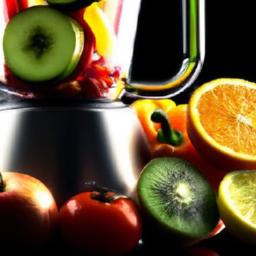Delmonico vs. Ribeye Steak: Uncovering the Distinctions and Flavor Profiles
In the realm of premium steaks, the Delmonico and ribeye often command top billing among enthusiasts. Yet, how divergent are these two cuts truly? At How To Cook Gourmet, we recognize that steak aficionados often have their loyalties firmly planted, but understanding the finer details can elevate your culinary choices.
Decoding the Mystery: What Sets Delmonico and Ribeye Apart?
The term Delmonico steak carries a degree of ambiguity, varying regionally and across butchers. While some identify it as a thick, tender cut derived from the rib eye area, others classify it as a prime strip loin or even chuck-eye steak. This naming inconsistency can leave many steak lovers puzzled.
Conversely, the ribeye steak is more clearly defined, originating exclusively from the rib section of the cow, particularly ribs six through twelve. It is renowned for its exquisite fat marbling, which melts into the meat during cooking to create a succulent, rich flavor experience. This marbling not only enhances juiciness but also intensifies the beefy taste.
| Characteristic | Delmonico | Ribeye |
|---|---|---|
| Typical Cut Location | Varies: Rib, Chuck, or Strip | Rib Section (Ribs 6-12) |
| Fat Marbling | Moderate to Variable | Abundant and Uniform |
| Texture | Varies by cut; from firm to tender | Exceptionally tender with juicy pockets |
| Flavor Profile | Robust, beef-forward to moderate | Rich, buttery, and intense |
Understanding these distinctions is crucial for choosing a steak that aligns with your taste preferences and cooking approach.
Origins Matter: The Impact of Cut Location on Taste and Cooking
The origin of a steak cut greatly influences not just flavor and texture, but also the ideal cooking techniques. The ribeye’s origin in a less-worked muscle group means it invites high-heat, fast cooking methods to capitalize on its marbled fat, producing a tender and juicy steak every time.
The Delmonico’s roots are more varied. When it comes from the chuck section, which carries more connective tissue, it often delivers a pronounced beefiness and slightly firmer chew, demanding more precise cooking to keep it tender without drying out.
| Steak Type | Common Source | Typical Texture | Flavor Nuance |
|---|---|---|---|
| Delmonico | Chuck or Rib Area | Firm, hearty | Deep, beef-rich |
| Ribeye | Rib Section | Butter-soft and tender | Buttery, bold |
For home chefs, choosing between these cuts means considering how much effort you want to invest in cooking and the flavor profile you desire.
Comparing Texture and Flavor: Which Steak Suits Your Palate?
Texture-wise, the Delmonico often presents a pleasing balance of firmness with a tender bite – akin to sinking into a medium-firm steak that holds its structure yet melts pleasantly. Ribeye, however, distinguishes itself by delivering soft, lofty tenderness punctuated by bursts of juicy fat that enrich each chew.
In flavor, the Delmonico leans towards a bold, meaty character that plays well with subtle seasoning, permitting spices or marinades to enhance without overpowering. The ribeye’s abundant fat imbues every mouthful with a buttery richness and robust, beef-forward punch.
| Attribute | Delmonico Steak | Ribeye Steak |
|---|---|---|
| Texture | Firm yet tender | Soft with juicy marbling |
| Flavor Notes | Rich, subtly beefy | Intense, buttery, savory |
| Fat Level | Moderate | High (integrated marbling) |
| Best Paired With | Mild seasonings, herbs | Bold rubs, smoky flavors |
Decide which sensory experience aligns best with your cravings – a velvety tenderness or a savory, juicy steak adventure.
Mastering Cooking Techniques for Each Cut
Each steak calls for a nuanced cooking approach to unlock its best qualities. Treating both cuts identically is like dressing a classic blazer with a hoodie-it’s simply not fitting.
Delmonico steaks respond well to medium-high heat searing, preferably on a cast-iron skillet or grill. Aim for a crusty exterior that locks in juices, cooking for about 4-5 minutes per side to reach medium-rare (around 130°F / 55°C). Let it rest 5 minutes to redistribute juices and maintain tenderness.
- Ideal technique: Direct sear on cast iron or grill
- Target temperature: 130°F (55°C) for medium-rare
- Rest time: 5 minutes under foil
Ribeye steaks thrive under intense heat to rapidly sizzle the fat and create a mouthwatering crust. Grilling or pan-searing over high heat, then finishing at a gentler temperature, yields a buttery texture and flavor. The reverse sear-slow cooking followed by a hot sear-is famed for elevating ribeye to chef’s kiss status.
- Preferred method: High heat sear followed by gentle finish
- Optimal temp: 135°F (57°C) for medium-rare
- Pro tip: Try reverse sear for a deeper flavor profile
| Cut | Cooking Method | Serving Temp | Chef Suggestion |
|---|---|---|---|
| Delmonico | Medium-high sear, grill or skillet | 130°F (55°C) | Rest 5 minutes before slicing |
| Ribeye | High heat sear + low-temp finish or reverse sear | 135°F (57°C) | Use thermometer for precision |
Price Perspectives: What to Expect When Buying Your Steak
Both Delmonico and ribeye steaks can command premium prices at butcher shops and restaurants. As of 2024, retail prices often reflect quality, demand, and origin.
| Steak Type | Average Price per Pound (USD) | Value Proposition |
|---|---|---|
| Delmonico | $22 – $38 | Rich flavor, tender bite, smaller cuts |
| Ribeye | $20 – $35 | Highly marbled, consistent juiciness, versatile |
The Delmonico often commands a slight premium due to perceived exclusivity and variable cut options. Ribeye generally offers a better balance between price and marbling quality, appealing to those who prioritize bold flavor and tenderness.
Ideal Pairings: Drinks and Sides That Elevate Your Steak Experience
What you drink and serve alongside your steak can transform a meal into an unforgettable event. Bold red wines, such as Malbec or Cabernet Sauvignon, are timeless companions, with tannins that temper the rich, fatty flavors of both ribeye and Delmonico.
For beer lovers, a robust porter or a dark Belgian ale complements the grilled crust and accentuates smoky aromas, especially with ribeye.
Classic side dishes that balance richness include:
- Creamy garlic mashed potatoes
- Roasted root vegetables with fresh herbs
- Sautéed wild mushrooms with thyme
- Crispy kale or Brussels sprouts for texture contrast
| Beverage | Pairing | Why It Works |
|---|---|---|
| Cabernet Sauvignon | Both Steaks | Firm tannins balance fat and enhance flavor depth |
| Robust Porter | Ribeye | Malty richness complements smoky char |
| Sparkling Mineral Water | Delmonico | Cleanses palate between bites |
Picking Your Steak for the Mood and Occasion
The choice between Delmonico and ribeye often hinges on the atmosphere and your dining goals. For an elegant dinner party or romantic setting, the Delmonico’s sophisticated tenderness and richness shine.
Meanwhile, ribeye is the quintessential cut for casual cookouts or hearty family meals; its indulgent marbling delivers on wow-factor every time.
| Occasion | Recommended Steak | Reasoning |
|---|---|---|
| Romantic Dinner | Delmonico | Elegant texture with refined flavors |
| Casual Gathering | Ribeye | Robust, juicy, crowd-pleasing |
| Special Celebration | Delmonico | Offers a memorable gourmet touch |
| BBQ or Picnic | Ribeye | Perfect for smoky, bold char grilling |
Storing and Revitalizing Leftover Steaks
Leftover steak doesn’t have to be an afterthought; proper storage and reheating can turn it into a star ingredient. To maintain freshness, refrigerate cooked steaks within two hours and store them in airtight containers or tightly wrapped in foil or plastic wrap.
| Storage Method | Duration | Suggested Use |
|---|---|---|
| Refrigerator (airtight) | 3-4 days | Next-day meals or sandwiches |
| Freezer (vacuum sealed) | Up to 3 months | Long-term storage for future meals |
| Freezer (wrapped) | About 1 month | Short-term frozen preservation |
When warming leftovers, opt for gentle reheating techniques – like a low oven temperature or skillet with added moisture – to keep the meat juicy and prevent toughness.
Leftovers can become:
- Steak and arugula sandwiches
- Protein-packed salads
- Steak and eggs breakfast skillet
Frequently Asked Questions: Delmonico vs Ribeye
Q: What exactly defines a Delmonico steak?
A: The Delmonico steak traditionally refers to a thick cut steak originating from either the rib or chuck areas, famed for its association with the historic Delmonico’s Restaurant in NYC. The exact cut varies, but it’s known for tender, flavorful beef with a slightly firmer texture compared to ribeye.
Q: How does ribeye differ from Delmonico?
A: Ribeye is specifically sourced from the rib section (ribs 6 through 12), prized for abundant marbling that imparts richness and tenderness. While some Delmonicos include ribeye cuts, not all do, making the ribeye more consistently tender and fat-marbled.
Q: Which steak offers superior flavor?
A: Ribeye generally delivers a more pronounced rich and buttery flavor due to higher fat content. Delmonico flavor varies with cut but tends to be beefy and robust with moderate richness.
Q: Which is more tender?
A: Ribeye’s marbling makes it one of the most tender cuts, often melting in the mouth. Delmonico’s tenderness depends on the exact cut, ranging from soft to moderately firm.
Q: Are their prices very different?
A: Pricing fluctuates by region and vendor. Ribeye often commands a slight premium due to popularity and fat content, although quality Delmonicos may be similarly priced or higher.
Q: What’s the best cook method for each?
A: Both respond well to searing. Ribeyes excel with high-heat griddling or reverse sear to render fat and lock juices, while Delmonicos benefit from medium-high heat with careful timing to maintain tenderness.
Q: Can one cut substitute the other?
A: Generally, yes-both come from nearby primal sections and provide rich beef flavors, though texture and fat content will vary. Experimenting with substitution offers fun flavor insights.
Q: Why is the Delmonico name significant?
A: The name honors Delmonico’s Restaurant, a trailblazer in American steak dining. It carries a legacy beyond precise cut definitions, evoking classic steakhouse tradition and fine dining history.
| Feature | Delmonico Steak | Ribeye Steak |
|---|---|---|
| Origin | Named after iconic NYC steakhouse | Cut from the rib primal section |
| Marbling | Variable | Consistently high |
| Tenderness | Moderate, depends on cut | Typically very tender |
| Flavor | Mild to intense beefiness | Bold, buttery, rich |
| Price Range | Moderate to premium | Typically higher |
| Cooking Difficulty | Requires attentiveness | More forgiving due to fat |
Final Thoughts: Which Steak Will You Choose?
Ultimately, your perfect steak depends on craving either the rich marbling and buttery texture of a ribeye or the bold beefy character and traditional charm of a Delmonico. Each cut has distinct merits, and both can be stars on your dinner plate.
From understanding their origin and cooking methods to pairing wines and sides, we’ve guided you through a flavorful journey. Whether you favor the melt-in-your-mouth ribeye or the classic, robust Delmonico, the sizzle and aroma promise satisfaction.
At How To Cook Gourmet, we celebrate the joy of exploring meat cuts and elevating your home cooking. Ready to try both and decide your favorite? The grill awaits.




